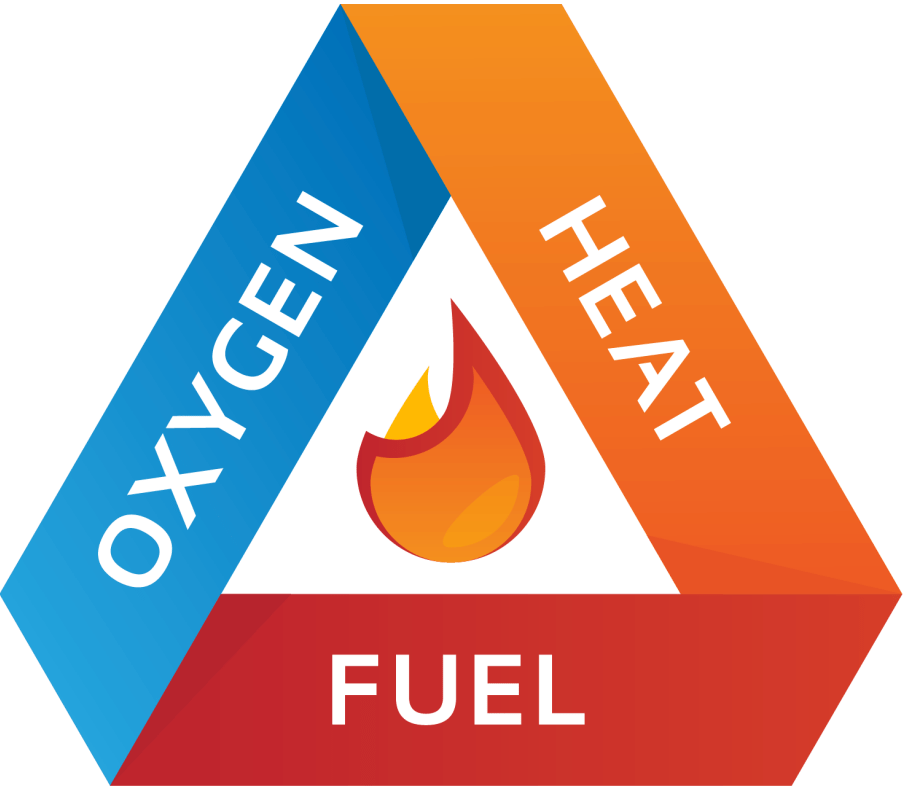Business owners and homeowners had to deal with the spread of a fire at some point in their lives. A fire can spread rapidly, from a small point of ignition to a blaze, in just a couple of minutes. Unfortunately, a fire can spread in a number of different ways, so the most effective way to stop the fire is to understand how the fire spread. So, how does fire spread, and is there a chance to prevent it before it spreads with dramatic speed?
Here, we’ll take a closer look at the three ways a fire can spread, how can you protect your property from the fire blaze, and the safety measures you may need to take when the fire starts spreading.
The Fire Triangle
Fire spread is influenced by various factors, including the availability of fuel, heat sources, and oxygen – the three components of the fire triangle. The type and arrangement of combustible materials, environmental conditions like wind and humidity, and the presence of fire barriers all play crucial roles.
Fire can spread through direct flame contact, radiant heat, or flying embers. In buildings, it may travel along corridors, through ventilation systems, or breach fire-resistant barriers if given enough time and intensity.

How long does it take for a fire to spread?
Outdoor, wildfires can spread rapidly across vegetation, especially in dry, windy conditions. Factors like fuel type, environmental conditions, and fire barriers significantly influence the speed, which can range from minutes to hours. Once the fire has started, it can spread in three ways: convection, conduction, and radiation.
The three ways a fire can spread
When a fire gets spread through convection, the heat generated by the fire naturally rises. But when fire gets spread in this way in a small, enclosed space, the fire hits the ceiling and starts spreading horizontally. We have to say that convection is one of the most common causes of fire spreading.
Conduction, on the other side, refers to the spread when a fire comes in direct contact with materials. Materials like metal are good conductors of heat. A fire spreading through conduction may involve the spread of fire through structural materials.
Lastly, we have radiation. Radiation transfers heat through electromagnetic waves in the air, and the heat transmits in every direction until reaching an object that can absorb it.
How Does Fire Spread – The Stages
Incipient Stage
The incipient stage marks the beginning of a fire, often characterized by minimal flame, light smoke, and little heat. During this phase, the fire is typically confined to its origin and may not be immediately noticeable without smoke detectors or keen observation. This stage presents the best opportunity for early intervention and control.
As the fire develops, it slowly begins to consume nearby combustible materials. The heat generated starts to build up, gradually warming surrounding objects and potentially creating flammable gasses through pyrolysis. Detection and swift action during this stage are critical for preventing further spread and minimizing damage.
Growth Stage
In the growth stage, the fire rapidly intensifies as it gains access to more oxygen and fuel. Heat output increases dramatically, causing a sharp rise in room temperature. Flames become more visible and start to spread to adjacent materials, accelerating the fire’s growth.
During this phase, the fire begins to create its own wind, drawing in fresh oxygen to fuel further combustion. Smoke production increases significantly, potentially obscuring visibility and making escape more challenging. The risk of flashover, where all combustible surfaces in an enclosed space ignite simultaneously, becomes a serious concern.
Fully Developed Stage
At the fully developed stage, the fire reaches its peak intensity with maximum heat release and energy output. Nearly all combustible materials in the affected area are involved in the fire, creating a dangerous and volatile environment.
The fire’s immense heat causes rapid spread to adjacent rooms or structures through radiation, conduction, and convection. Structural integrity may be compromised as building materials weaken under extreme temperatures. Firefighting efforts at this stage focus on containment and preventing further spread to unaffected areas.
Decay Stage
The decay stage begins as the fire consumes available fuel and its intensity starts to diminish. Heat output decreases, and flame size reduces as the fire loses its energy source. However, this stage can still present significant dangers, particularly to firefighters entering the scene.
Despite the apparent reduction in fire activity, the risk of re-ignition remains high. Smoldering materials and hidden hotspots can reignite if exposed to fresh oxygen, potentially restarting the fire cycle. Careful overhaul procedures are necessary to ensure all fire sources are fully extinguished and prevent any chance of the fire rekindling.

Conclusion
We hope this article has helped you understand the multifaceted nature of fire spread and its implications for both personal and community safety. This knowledge of how does fire spread is crucial for effective fire prevention and safety. We’ve explored the stages of fire development and the modes of heat transfer.
Armed with this knowledge, you’re better equipped to implement fire prevention strategies in your daily life and recognize potential fire hazards. Remember, awareness and preparation are key in minimizing the risk and impact of fires, ultimately saving lives and property.


